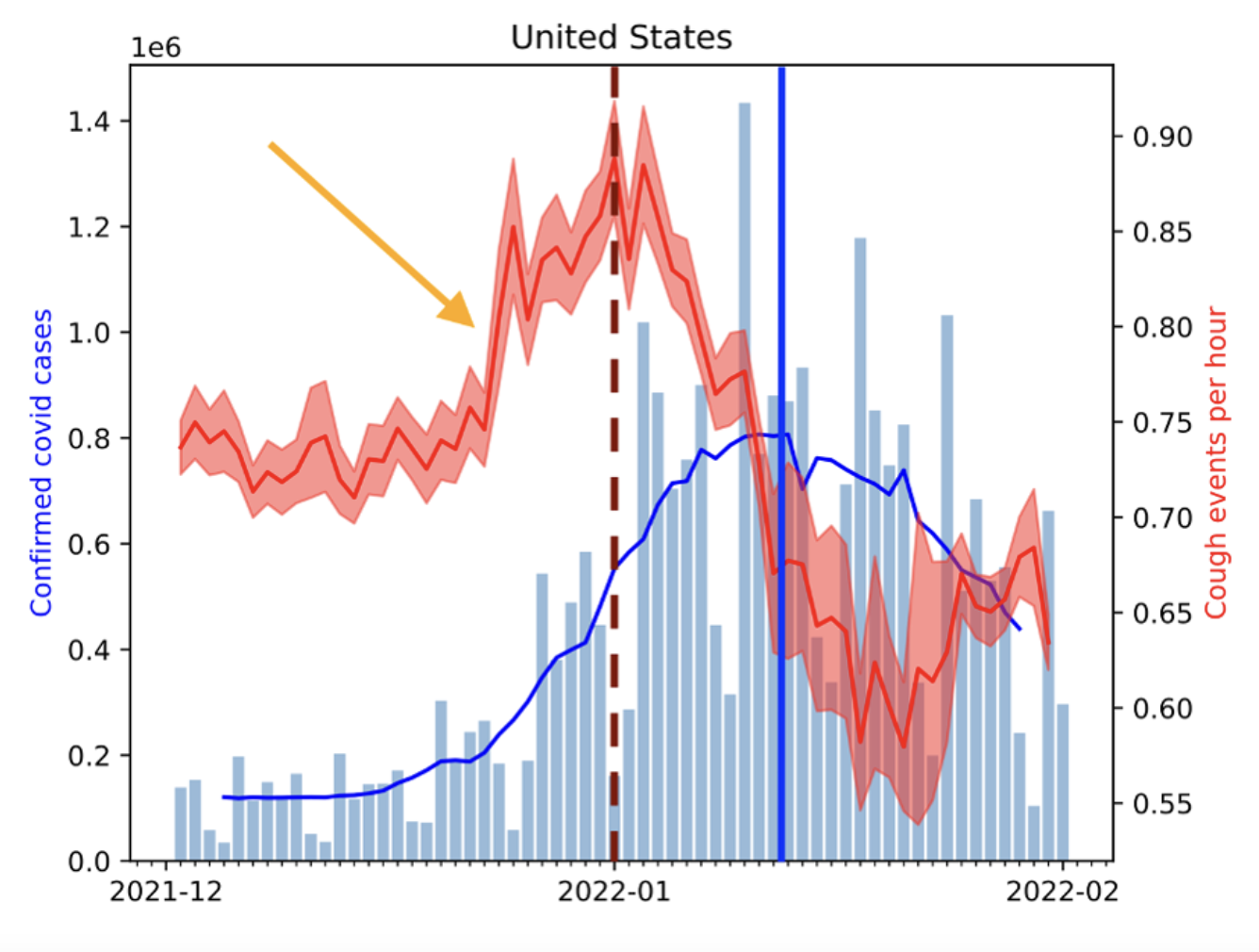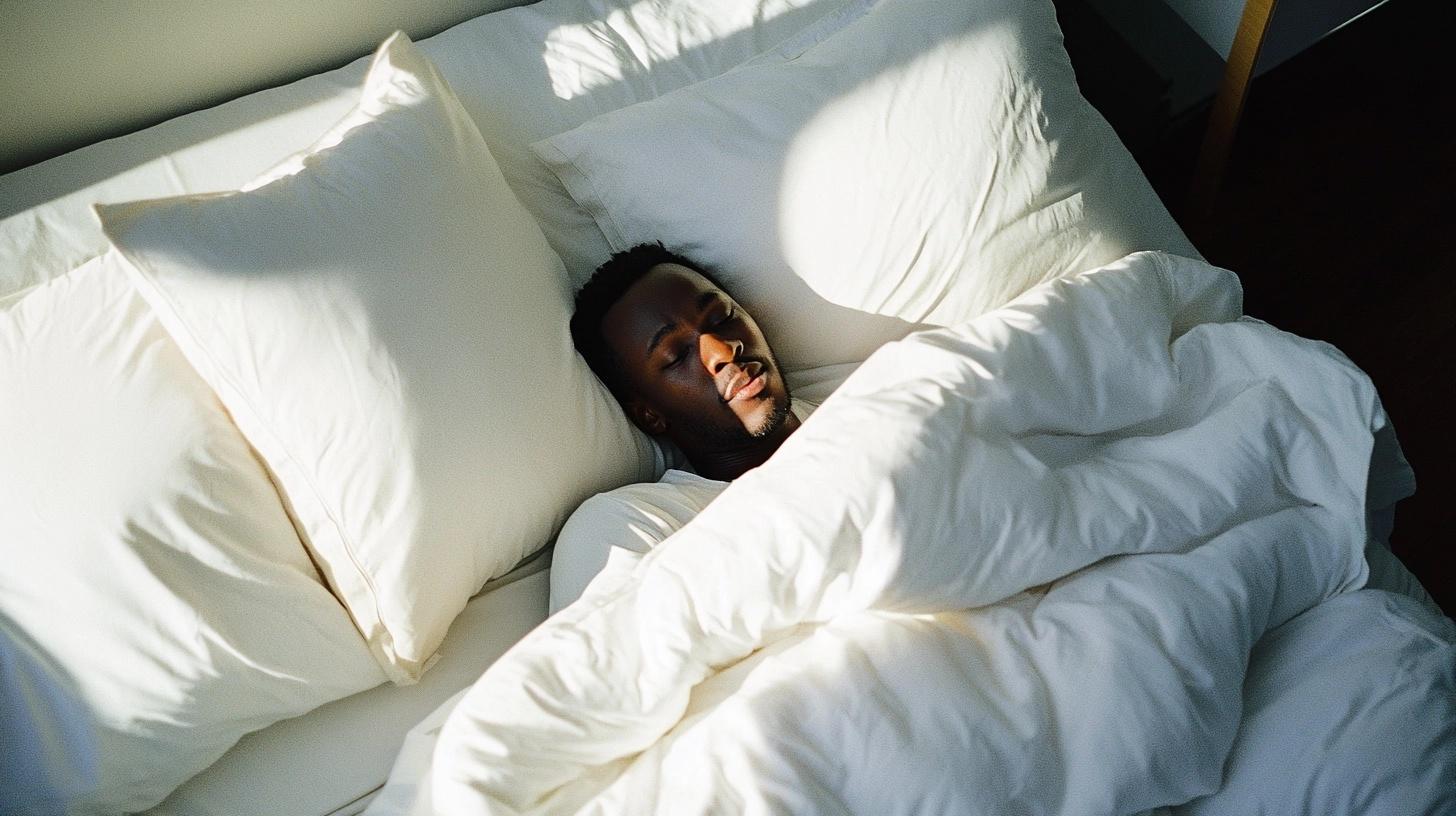The Sleep, Cough and Omicron Correlation
Published

Sleep Cycle has a long tradition of contributing to the research and academic community to advance sleep health and promote deep insights on sleep. A recent study at Sleep Cycle shows how our coughing data could have contributed to an early detection of the Omicron outbreak and can be used to detect future outbreaks.
Many of our users are familiar with Sleep Cycle’s sound-detection sleep tracking feature. To many, the ability to listen to the recordings of their sleep sounds is a powerful way to better understand their sleep. Users choose themselves whether they want to opt in to share this data.
The patented algorithm that powers the sleep-detection feature has also made it possible to analyze the coughing frequency during sleep in 100,000s of American users during November last year.
Mike Gradisar and Daniel Sääf, Sleep Cycle’s Head of Sleep Science and Data Scientist, respectively, took a closer look at this sleep data and saw a possible correlation with the Omicron outbreak that occurred earlier in 2022.
By correlating coughing with confirmed Omicron outbreaks in the United States, a direct link was found that revealed the coughing outbreaks occurred long before they were recorded in official statistics.
The spike in cough-related sleep data
The Sleep Cycle app captures, analyzes and discerns nighttime sounds. The sleep tracker analyzes the sounds that occur when the user sleeps, with the aim of helping them understand how they can improve their sleep quality. Some examples of sounds that are captured and analyzed are movements, breathing, snoring, coughing and sleep talking.
In connection with Sleep Cycle’s analysts linking sleep data from 100,000s of daily U.S. users with the number of confirmed Omicron infections in the U.S. during the period of the Omicron outbreak in November 2021 that Sleep Cycle discovered that there was a direct correlation. The spike in cough-related sleep data piqued Mike and Daniel’s interest. The discovery has now been compiled in a report by them both.
Sleep Cycle coughing data and confirmed Omicron cases
A key to understanding the potential impact of sleep sounds and why its contribution to research is of importance is by studying how certain Omicron symptoms developed at night time.
A persistent dry cough is a commonly reported Omicron variant symptom and the novelty with Sleep Cycle’s app is the potential to pick up on the early signs of Omicron that may occur during sleep. For instance, if people experience nasal congestion they will have difficulty breathing. And when we lie down at night, and our muscles relax – including muscles that assist with breathing – the end result is a significant increase in difficulty breathing. And this is audible, as people tend to snore or cough more.
It’s interesting to note that there’s a remarkable likeness between Sleep Cycle’s coughing data – and a country’s confirmed cases of the Omicron variant. The app is able to calculate the number of coughs per hour for each person – and collate these for a country. Each day. This culminates in data that can show ‘coughing curves’. Below is a graph comparing Sleep Cycle coughing data and confirmed Omicron cases in the United States.

Yet it’s not only the shape of the coughing curves that is of interest, but also the timing of the peaks. Overall, it appears that there is ~ 2 weeks between the peak of Sleep Cycle’s coughing data (peak of the red curve) and the peak of confirmed cases (blue curve). Sleep Cycle’s coughing data also accelerated prior to each peak (visible in the orange arrow).
This suggests that the Sleep Cycle app may be able to detect a rise in confirmed cases of COVID-19 and in extension this poses new opportunities to quickly identify and act on the risks of potential future outbreaks, without the need for time-consuming data collection projects.
Collecting and compiling aggregated data from users who are willing to share it presents a unique and attractive cost-and-time-efficient proposition. There’s also the ability to continuously present frequency curves for a country or region.
In the future, as we see new variants that could pose a risk, sleep data can prove to be a powerful tool for governments and major public health bodies and serve as an early detection system. The insights gained can be of great importance for the successful management of potential future covid outbreaks.






